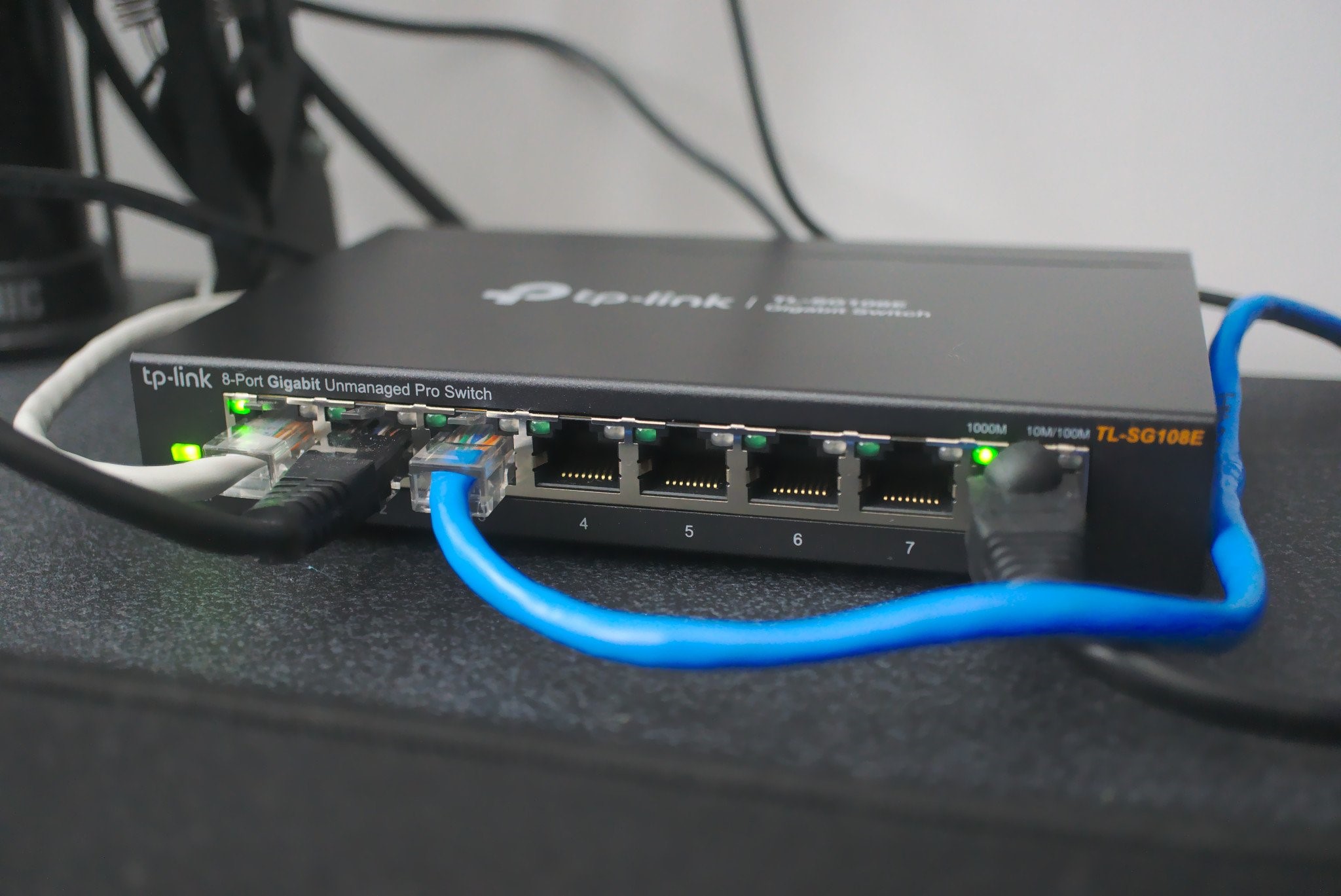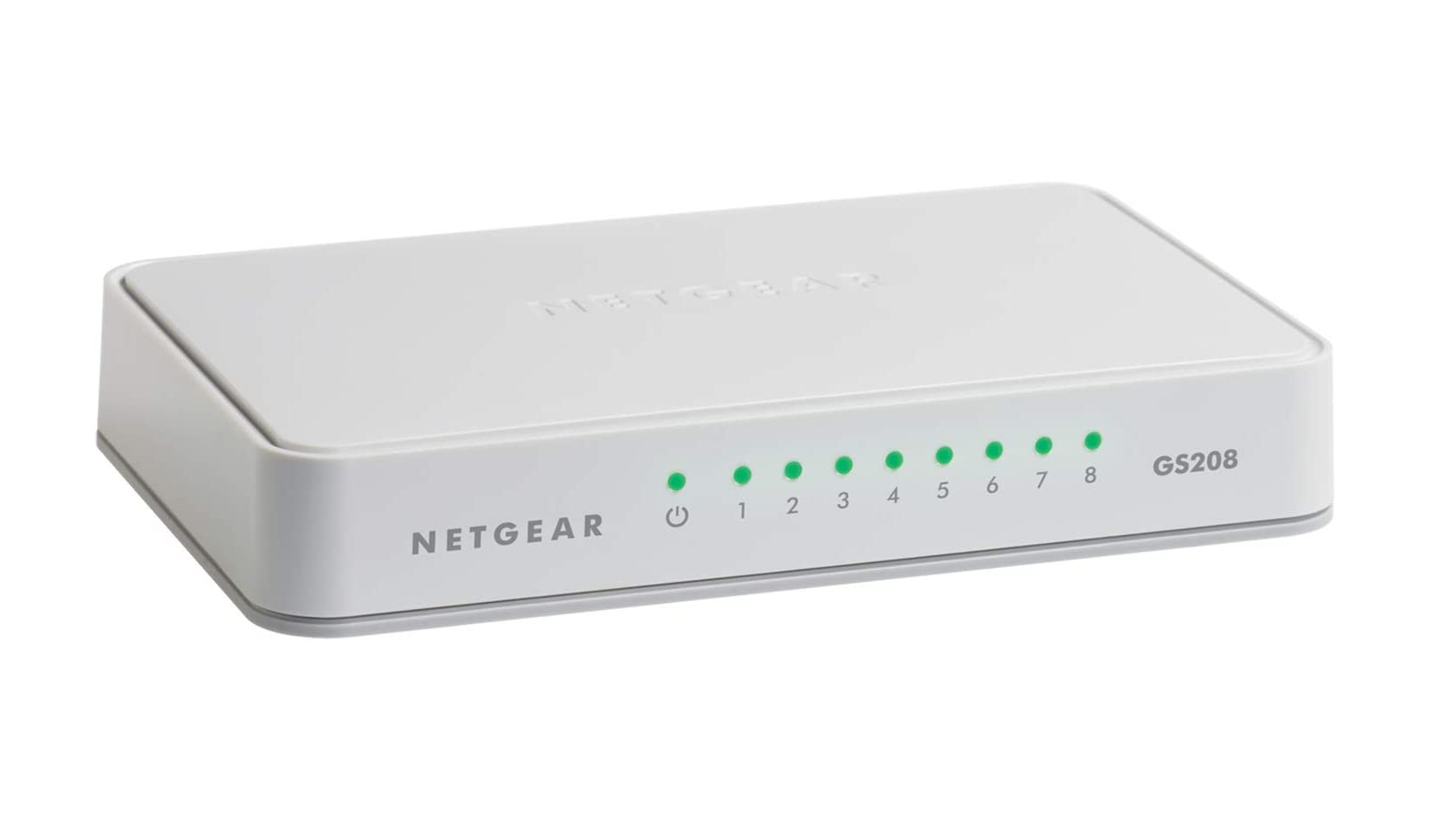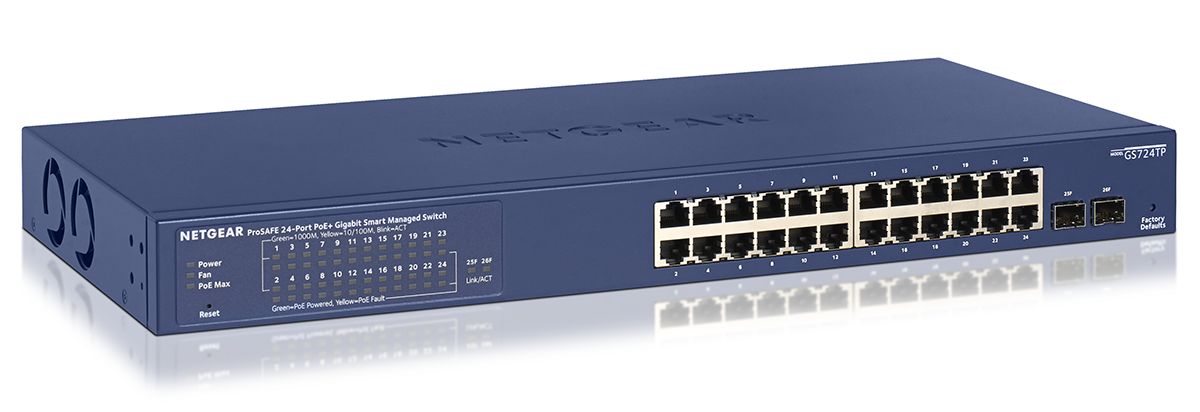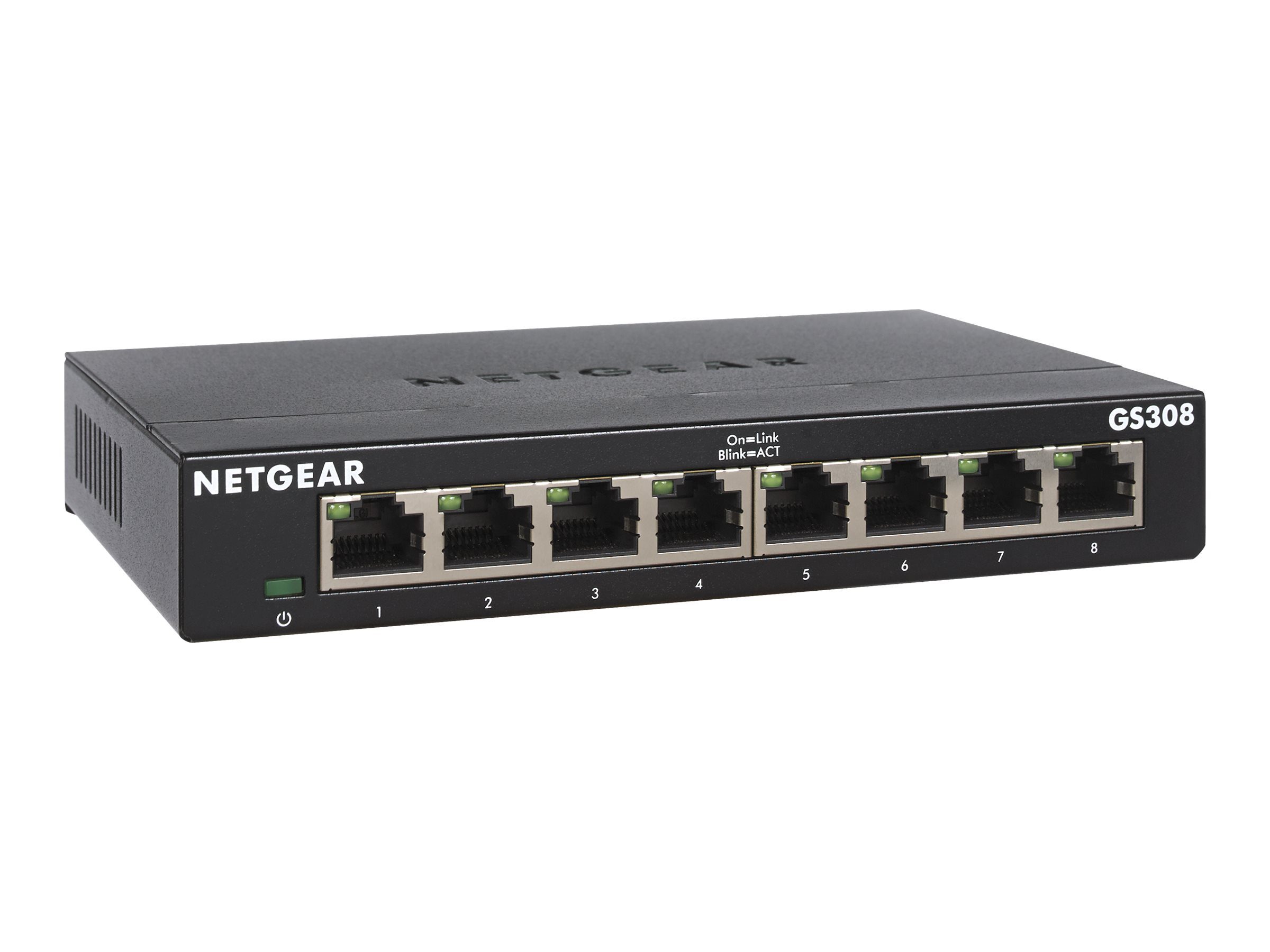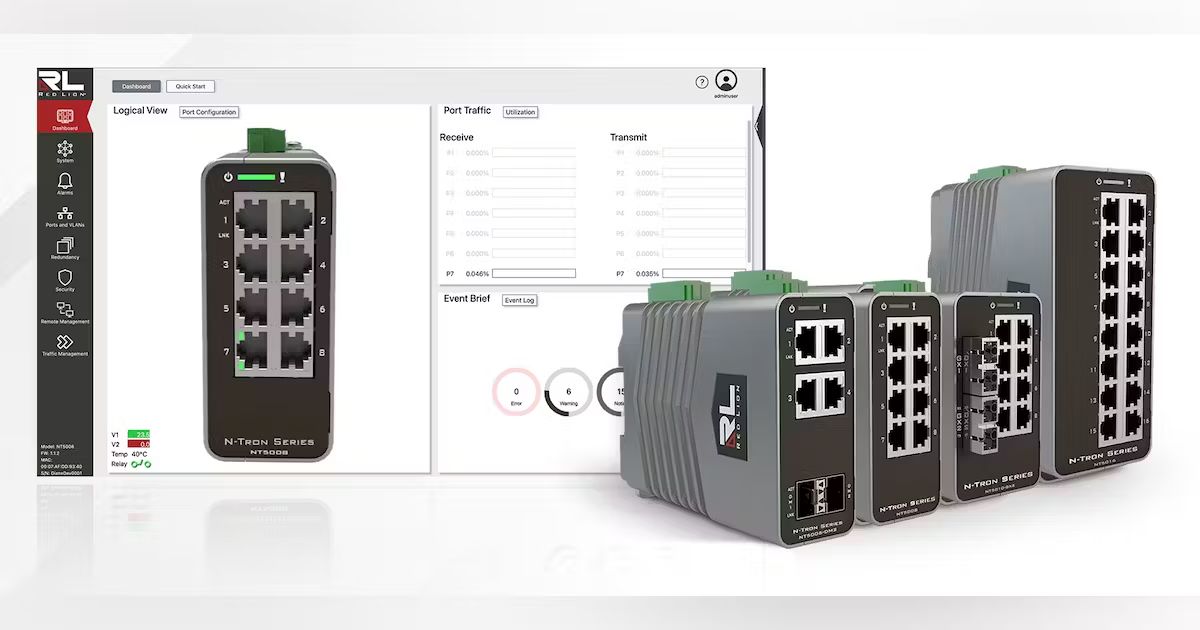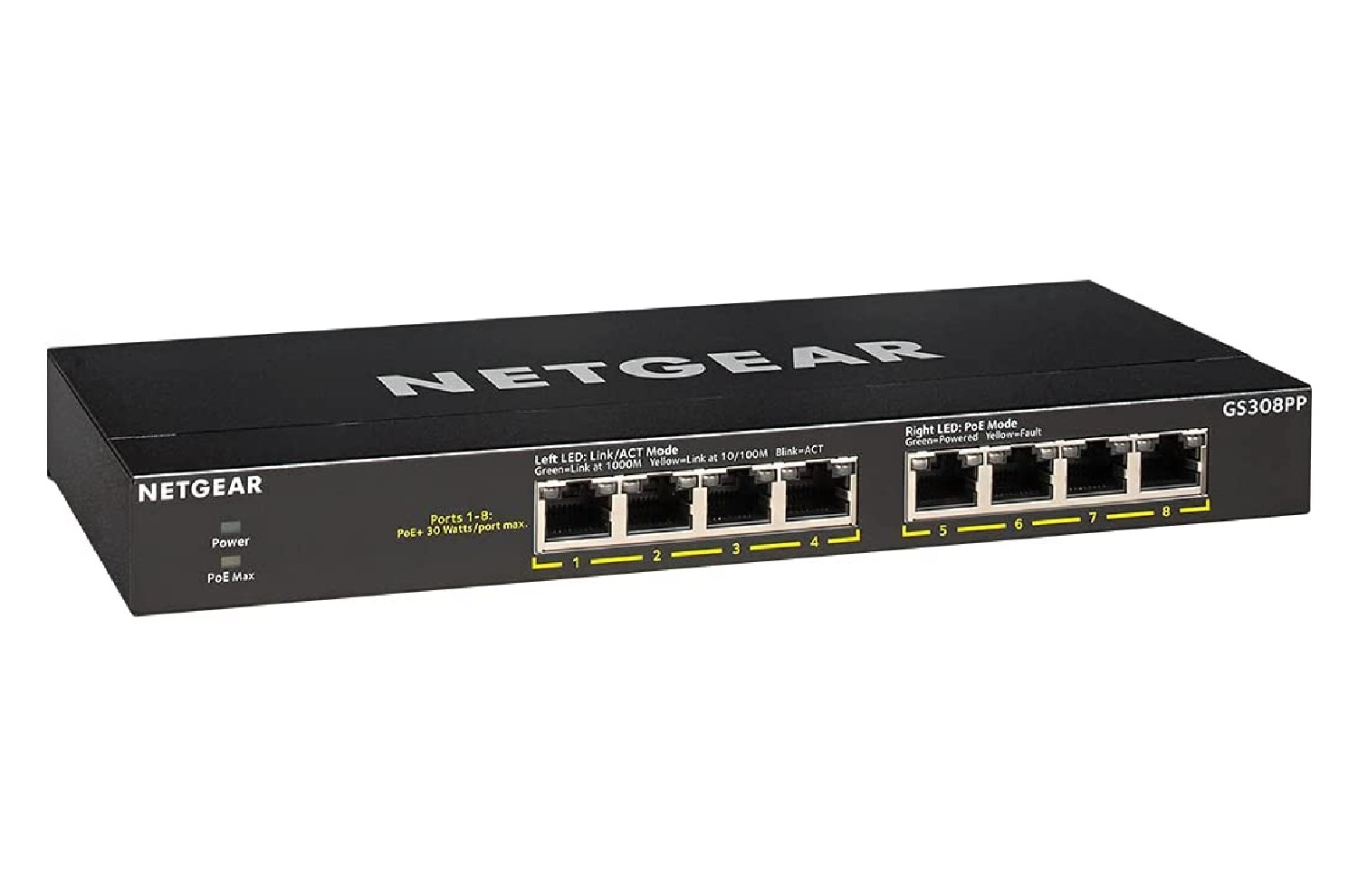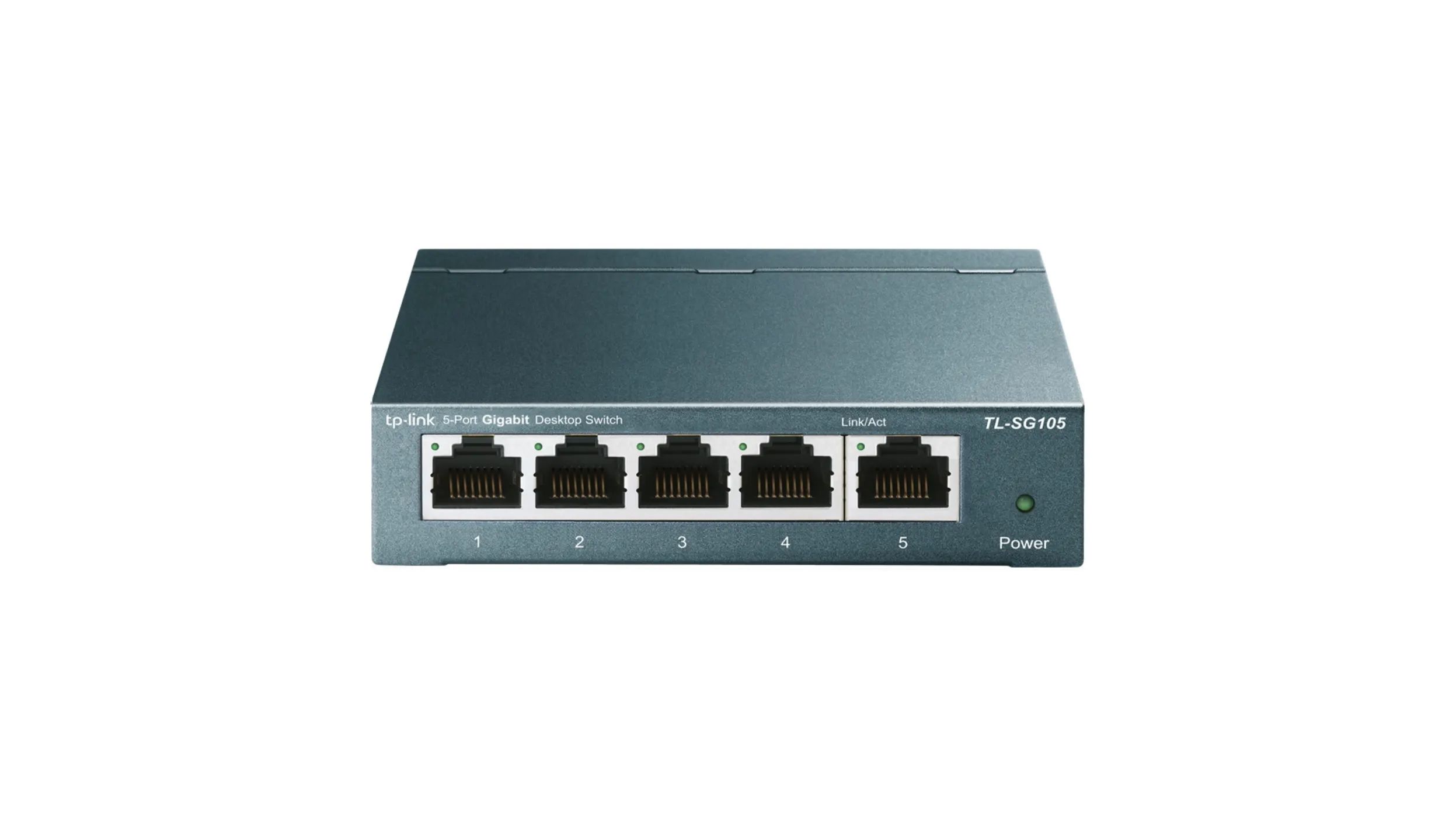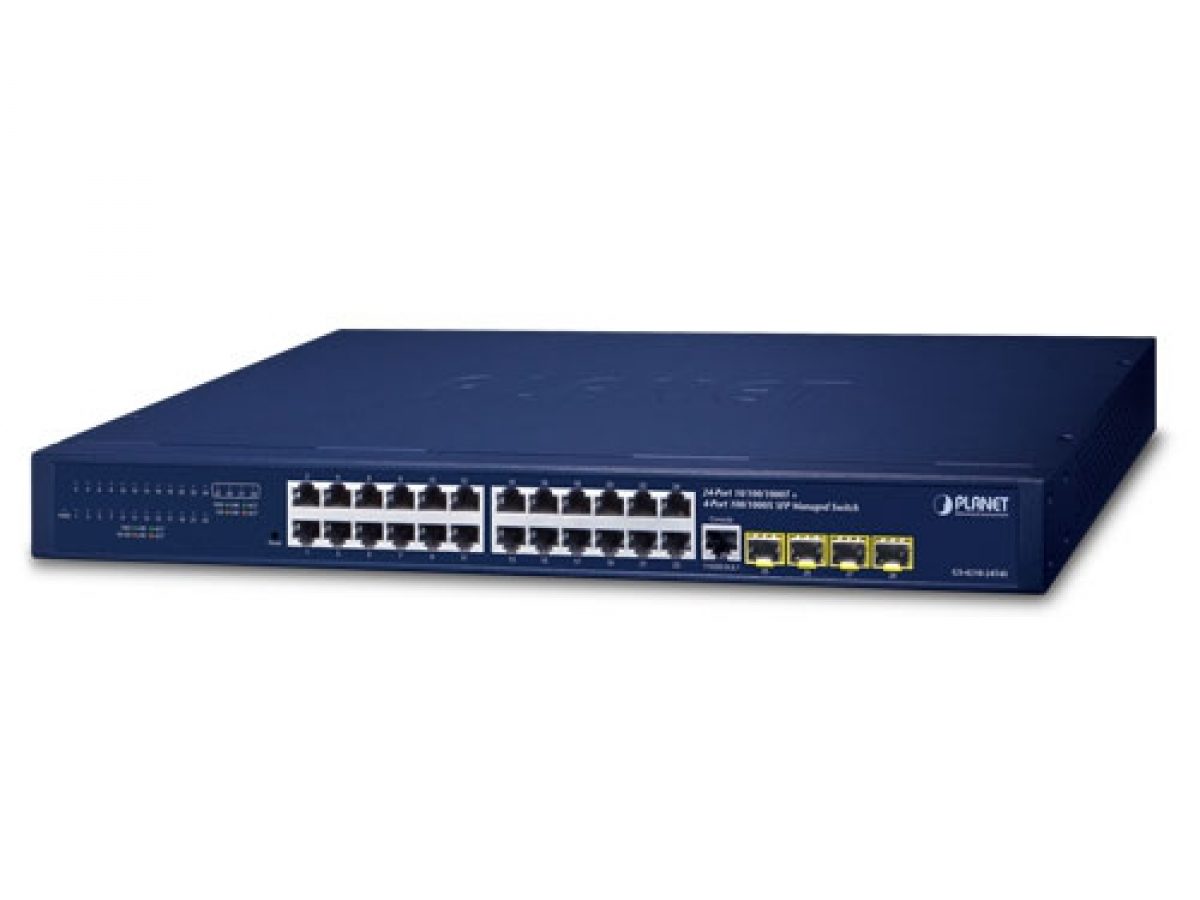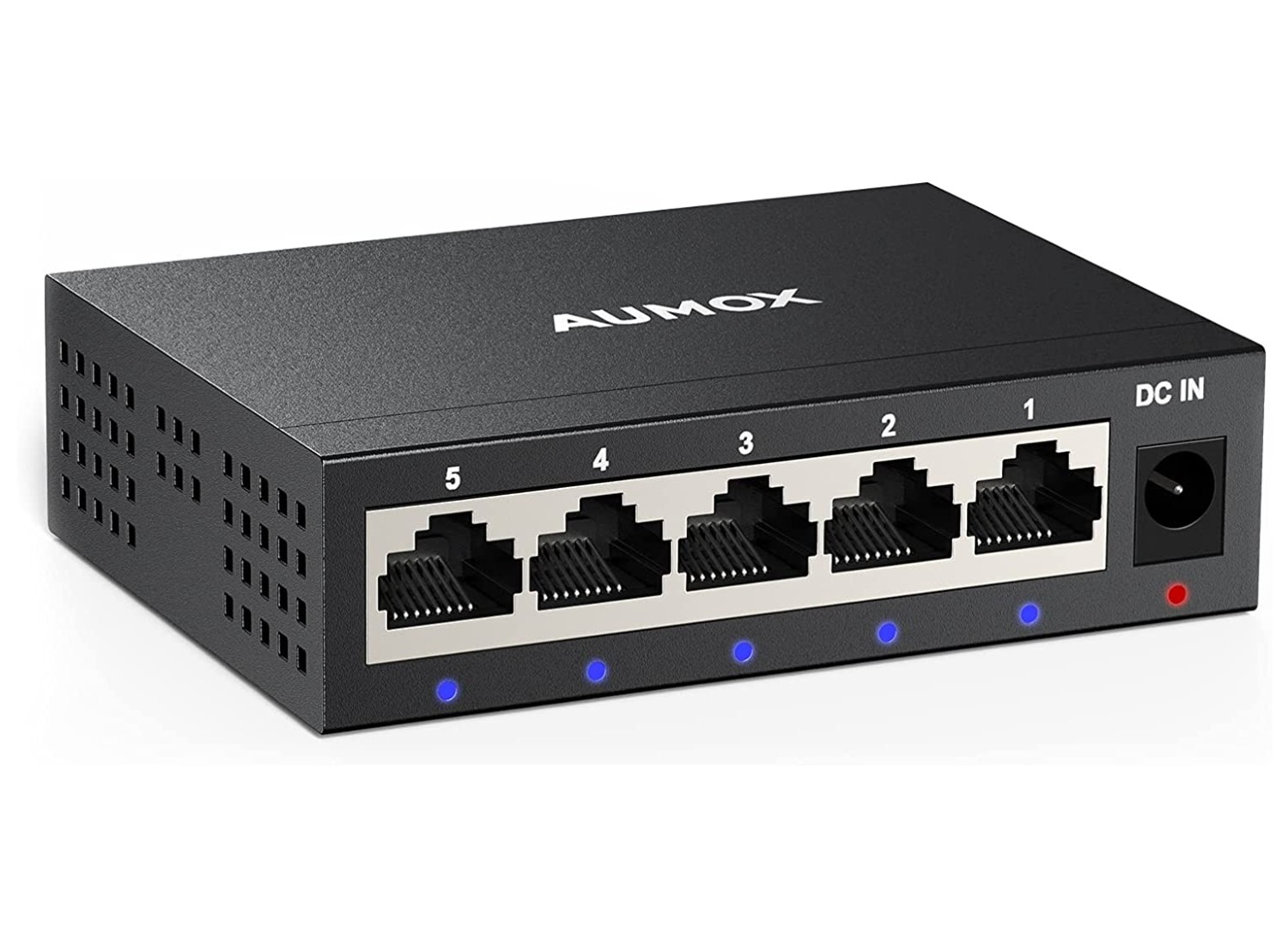Introduction
Welcome to the world of Ethernet switches – the backbone of modern computer networks. In today’s digital age, where connectivity and communication are essential, Ethernet switches play a crucial role in ensuring seamless data transmission. Among the various types of Ethernet switches available, one commonly used option is the unmanaged Ethernet switch. In this article, we will delve into the world of unmanaged Ethernet switches, exploring their definition, functionality, benefits, limitations, and the scenarios in which they are most suitable.
An unmanaged Ethernet switch is a plug-and-play networking device that enables multiple devices to connect and communicate within a local area network (LAN) without the need for manual configuration. Unlike managed switches, which offer advanced features and customization options, unmanaged switches are designed to provide simple and straightforward networking solutions for small-scale setups.
Unmanaged Ethernet switches are widely used in home networks, small offices, and environments where simplicity and ease of use are valued over granular control. These switches offer a cost-effective solution for connecting computers, printers, IP cameras, gaming consoles, and other Ethernet-enabled devices in a network.
One of the key advantages of unmanaged switches is their simplicity. They are ready to use out of the box, requiring no additional configuration or management software. This makes them ideal for non-technical users or those who prefer a hassle-free networking solution.
Unmanaged switches operate based on the plug-and-play principle. Once connected to the network and powered on, these switches automatically detect and establish connections with the devices connected to them. They use a store-and-forward mechanism to receive, process, and forward data packets, ensuring efficient and reliable communication within the network.
In the following sections, we will explore the working principle of unmanaged Ethernet switches in more detail, discuss their benefits and limitations, and identify scenarios where these switches are the most suitable choice.
Definition and Explanation of an Unmanaged Ethernet Switch
An unmanaged Ethernet switch is a type of networking device that allows multiple computers and devices to be connected within a local area network (LAN) without requiring any manual configuration. It operates at the Data Link Layer of the OSI model and serves as a central hub for data communication between network devices.
Unlike managed switches, which offer advanced configuration options and allow for network optimization and control, unmanaged switches are designed for simplicity and ease of use. They are typically used in small-scale setups, such as home networks or small offices, where basic connectivity is the primary requirement.
Unmanaged switches are known for their plug-and-play capability. This means that once they are connected to the network and powered on, they automatically start functioning without any additional setup. The devices connected to the switch can start communicating with each other immediately.
These switches have a fixed configuration and do not require any manual intervention for network management. They have a limited set of features and lack the ability to define and manage VLANs (Virtual Local Area Networks), QoS (Quality of Service), or other advanced network settings.
In an unmanaged Ethernet switch, incoming data packets are received and forwarded to the destination devices without any alteration or filtering. The switch operates on the basis of MAC addresses, which are unique identifiers assigned to each network device. It maintains a MAC address table that maps the MAC addresses of the connected devices and uses this table to forward packets to the appropriate destination.
It is important to note that in an unmanaged switch, all connected devices are on the same network and share the same broadcast domain. This means that any broadcast or multicast traffic generated by one device is received by all other devices connected to the switch.
Overall, unmanaged Ethernet switches offer a straightforward and affordable networking solution for basic connectivity needs. They are easy to install, require minimal maintenance, and are suitable for small-scale networks where advanced features and customization options are not necessary.
How an Unmanaged Ethernet Switch Works
An unmanaged Ethernet switch operates by using a simple yet effective mechanism to facilitate communication between network devices. Understanding how these switches work can help in better utilizing them for establishing network connectivity.
When you connect devices to an unmanaged switch, it automatically detects the incoming connections and establishes a link between the devices. It does not require any manual configuration or setup. Once the devices are connected and the switch is powered on, it starts functioning immediately.
The switch creates a local area network (LAN), providing a central point for devices to connect and communicate. Each device connected to the switch has a unique MAC address, which serves as an identifier at the Data Link Layer of the OSI model. The switch maintains a MAC address table that maps the MAC addresses of the connected devices.
When a device sends a data packet, the switch receives it and checks its destination MAC address. The switch then looks up the MAC address table to determine the interface through which the packet needs to be forwarded. This enables the switch to send the packet directly to the intended device, reducing unnecessary traffic and improving network efficiency.
The switch utilizes a technique called store-and-forward to ensure the integrity of the transmitted data. In this process, the switch receives the entire data packet, including the header and payload. It validates the packet for errors by performing a CRC check, ensuring that the packet is intact and error-free. If any errors are detected, the switch discards the packet to prevent corrupted data from being forwarded.
Once the packet is confirmed to be error-free, the switch forwards it to the appropriate device based on the MAC address table. The switch uses the destination MAC address to identify the device and sends the packet only to that specific device, while other devices connected to the switch are unaffected.
It is important to note that unmanaged switches operate on a single broadcast domain. This means that any broadcast or multicast traffic sent by one device is received by all other devices connected to the switch. This can sometimes lead to increased network traffic and may affect network performance in larger setups.
Overall, the functioning of an unmanaged Ethernet switch is straightforward and automatic. It simplifies the process of connecting devices within a network, providing a seamless communication platform for home networks, small offices, and other similar environments.
Benefits of Using an Unmanaged Ethernet Switch
Unmanaged Ethernet switches offer several benefits that make them a popular choice for small-scale networks and basic connectivity needs. Let’s explore some of the key advantages of using an unmanaged switch:
1. Simple and Easy to Use: Unmanaged switches are designed for simplicity and ease of use. They are plug-and-play devices that require no manual configuration or setup. This makes them a convenient choice for non-technical users or those who prefer a hassle-free networking solution.
2. Affordable and Cost-Effective: Unmanaged switches are generally more affordable compared to their managed counterparts. They offer a budget-friendly networking solution for small businesses, home networks, and environments with limited networking requirements.
3. Instant Connectivity: With an unmanaged switch, devices can be connected and begin communication immediately. There is no need to wait for network configuration or software installation. This makes it convenient for quickly setting up a network or adding new devices.
4. Low Maintenance: Since unmanaged switches have a fixed configuration and lack advanced features, they require minimal maintenance. There is no need for firmware updates or continuous monitoring, which saves time and effort.
5. Improved Network Performance: Unmanaged switches can enhance network performance in small-scale environments. By providing dedicated communication channels between devices, they reduce network congestion and improve data transfer speeds.
6. Reliable Data Transmission: Unmanaged switches utilize the store-and-forward mechanism to ensure data integrity. They validate incoming data packets and discard any corrupted packets, ensuring reliable and error-free data transmission.
7. Compatibility: Unmanaged switches are compatible with a wide range of Ethernet-enabled devices, including computers, printers, IP cameras, and gaming consoles. They support standard Ethernet protocols, making them compatible with most network devices.
8. Expandability: Unmanaged switches often come with multiple ports, allowing for the easy expansion of the network as needs grow. Additional devices can be easily connected to the switch without requiring any reconfiguration.
9. Flexibility: Unmanaged switches can be used in various environments, from small offices and home networks to temporary setups or events that require quick and simple networking solutions.
10. Energy Efficiency: Most unmanaged switches have built-in energy-saving features, such as automatically adjusting power consumption based on network activity. This helps in reducing energy costs and promoting eco-friendly practices.
Overall, unmanaged Ethernet switches offer a range of benefits, including simplicity, affordability, instant connectivity, low maintenance, improved performance, and compatibility. They are an excellent choice for small-scale networks where basic connectivity is the primary requirement.
Limitations of an Unmanaged Ethernet Switch
While unmanaged Ethernet switches offer simplicity and cost-effectiveness, they also have certain limitations that need to be considered when choosing the right networking solution. Let’s explore some of the key limitations of using an unmanaged switch:
1. Lack of Advanced Features: Unmanaged switches have a limited set of features compared to managed switches. They do not support advanced functionalities such as VLANs (Virtual Local Area Networks), QoS (Quality of Service), or network prioritization. This can be a limitation in scenarios where granular control and optimization are desired.
2. No Network Monitoring or Troubleshooting: Unmanaged switches provide no monitoring or troubleshooting capabilities. This means that diagnosing network issues or identifying problematic connections becomes more challenging. Managed switches offer tools for monitoring network performance, identifying bottlenecks, and troubleshooting connectivity problems.
3. Single Broadcast Domain: In an unmanaged switch, all devices connected to the switch share the same broadcast domain. This means that any broadcast or multicast traffic generated by one device is received by all other devices. In larger setups, this can lead to increased network traffic and potentially impact network performance.
4. Lack of Traffic Management: Unmanaged switches do not have built-in traffic management capabilities. Without the ability to prioritize certain types of traffic or allocate bandwidth resources, it can be challenging to manage and control network congestion in scenarios where quality of service is critical.
5. No Remote Configuration or Management: Unlike managed switches, which can be remotely configured and managed, unmanaged switches lack this capability. Any changes to the network configuration, such as adding or removing devices or modifying network settings, must be done manually on each individual device connected to the switch.
6. Limited Scalability: Unmanaged switches typically have a fixed number of ports. This limits the scalability of the network, as adding more devices beyond the available ports would require the use of additional switches or upgrading to a managed switch with more ports.
7. No VLAN Support: VLANs allow for the segmentation of the network, enabling different groups of devices to have separate broadcast domains and enhanced network security. Unmanaged switches do not support VLANs, which can be a limitation in environments that require network segmentation.
8. Security Concerns: Unmanaged switches do not provide the same level of security features as managed switches. They lack advanced security protocols, such as port-based security or access control lists, which can increase the vulnerability of the network to unauthorized access or malicious activities.
It is important to consider these limitations when deciding whether an unmanaged switch is the right fit for a specific network setup. In scenarios where advanced features, network monitoring, granular control, or scalability are crucial, it may be more appropriate to opt for a managed switch that offers the necessary capabilities.
When to Use an Unmanaged Ethernet Switch
An unmanaged Ethernet switch is a suitable choice in specific scenarios where simplicity, cost-effectiveness, and basic connectivity are the primary requirements. Let’s explore some situations when an unmanaged switch can be the right option:
1. Small Networks: Unmanaged switches are ideal for small networks with a limited number of devices. They provide a straightforward and plug-and-play solution for connecting computers, printers, and other Ethernet-enabled devices in home networks or small offices.
2. Non-Technical Users: If the network users are not familiar with network configuration and management, an unmanaged switch offers a user-friendly solution. Its simplicity and automatic operation make it accessible to non-technical users who seek an easy networking setup.
3. Basic Connectivity: When the network requirements involve basic file sharing, printing, internet access, or local communication between devices, an unmanaged switch can serve these needs without the complexity of advanced features.
4. Budget Constraints: Unmanaged switches are generally more affordable compared to managed switches. If budget constraints are a consideration, an unmanaged switch provides a cost-effective networking solution without compromising essential connectivity.
5. Temporary or Event-Based Setups: Unmanaged switches are often used in temporary or event-based network setups. For example, at trade shows, conferences, or temporary work locations, where quick and simple networking solutions are required, an unmanaged switch can provide instant connectivity.
6. Stand-Alone Networks: In certain cases, a stand-alone network with no need for integration or interaction with other networks may benefit from an unmanaged switch. This could include isolated networks used for specific purposes or areas where direct connectivity and communication are the primary concern.
7. Home Networks or Small Offices: Unmanaged switches are commonly utilized in home networks or small office environments with limited IT resources and networking requirements. These switches can handle basic networking tasks without the complexity associated with managed switches.
8. Limited Network Changes: If network changes or device additions in the future are expected to be infrequent, an unmanaged switch can suffice. Since they do not offer remote configuration or management capabilities, manual changes may be suitable in environments with limited network alterations.
It is important to carefully evaluate the specific networking needs and consider factors such as the size of the network, technical capabilities, budget, and future scalability before deciding to use an unmanaged Ethernet switch. While they provide simplicity and cost-effectiveness, it is crucial to ensure that the chosen switch aligns with the requirements of the network setup.
Popular Brands and Models of Unmanaged Ethernet Switches
When it comes to selecting an unmanaged Ethernet switch for your network, there are several reputable brands and models available in the market. Let’s take a look at some of the popular options:
1. NETGEAR: NETGEAR is a well-known brand in the networking industry and offers a range of reliable unmanaged Ethernet switches. Their models, such as the NETGEAR GS105 and GS108, provide a simple and cost-effective solution for small networks and home setups.
2. TP-Link: TP-Link is another popular brand offering a variety of unmanaged switch options. Their models, including the TP-Link TL-SG108 and TL-SG105, are known for their ease of use, affordability, and reliable performance.
3. Linksys: Linksys has been a trusted name in networking for years, and their unmanaged switches are no exception. The Linksys LGS105 and LGS108 models are highly regarded for their plug-and-play functionality and robust build quality.
4. D-Link: D-Link is known for its range of networking products, including unmanaged switches. The D-Link DGS-105 and DGS-108 models offer a combination of affordability, reliability, and easy setup, making them suitable for small networks and home use.
5. Cisco: Cisco is a leading brand in the networking industry, and while they are well-known for their advanced managed switches, they also offer unmanaged switch options. The Cisco SG110D and SG110D-05 models provide simple and reliable connectivity for small networks.
6. HPE: Hewlett Packard Enterprise (HPE) offers a range of unmanaged switches designed for various network sizes. The HPE OfficeConnect 1420 series is known for its affordability and straightforward setup, making it a popular choice for small businesses.
7. Zyxel: Zyxel is a trusted brand for networking solutions, including unmanaged switches. The Zyxel GS1100 series, such as the GS1100-8HP, delivers power over Ethernet (PoE) capabilities along with simple and reliable network connectivity.
8. Ubiquiti Networks: Ubiquiti Networks offers unmanaged switches that are highly regarded for their affordability and performance. The Ubiquiti Networks UniFi Switch Lite models, like the USW-Lite-8-POE and USW-Lite-16-POE, provide reliable connectivity for small-scale deployments.
Before selecting a specific model, it is important to consider factors such as the number of ports needed, desired data transfer speeds, power over Ethernet (PoE) requirements, and any specific features or compatibility requirements for the network setup.
These popular brands and models of unmanaged Ethernet switches offer a range of options to meet various networking needs. It is recommended to read product reviews, compare features, and consider the specific requirements of your network before making a final decision.
Conclusion
Unmanaged Ethernet switches provide a simple and cost-effective solution for establishing basic connectivity within a network. They are ideal for small-scale setups, home networks, and environments where simplicity and ease of use are valued over advanced features and customization options.
In this article, we explored the definition and functionality of unmanaged Ethernet switches. We learned that these switches operate on a plug-and-play principle, requiring no manual configuration or setup. They automatically detect and establish connections between devices, allowing for immediate communication within the network.
While unmanaged switches offer simplicity and affordability, it is important to consider their limitations. These switches lack advanced features, such as VLANs or QoS, and may not provide the same level of network monitoring or troubleshooting capabilities as managed switches. Therefore, they are most suitable for scenarios where basic connectivity and uncomplicated operation are the primary requirements.
Some popular brands of unmanaged Ethernet switches include NETGEAR, TP-Link, Linksys, D-Link, Cisco, HPE, Zyxel, and Ubiquiti Networks. Each brand offers a variety of models with different specifications to cater to diverse networking needs.
In conclusion, unmanaged Ethernet switches provide a straightforward and affordable networking solution for small-scale networks. They facilitate basic connectivity and can be easily set up without the need for extensive technical knowledge or configuration. However, it is important to consider the specific requirements of your network before selecting an unmanaged switch, ensuring that it aligns with your connectivity needs and future scalability.







